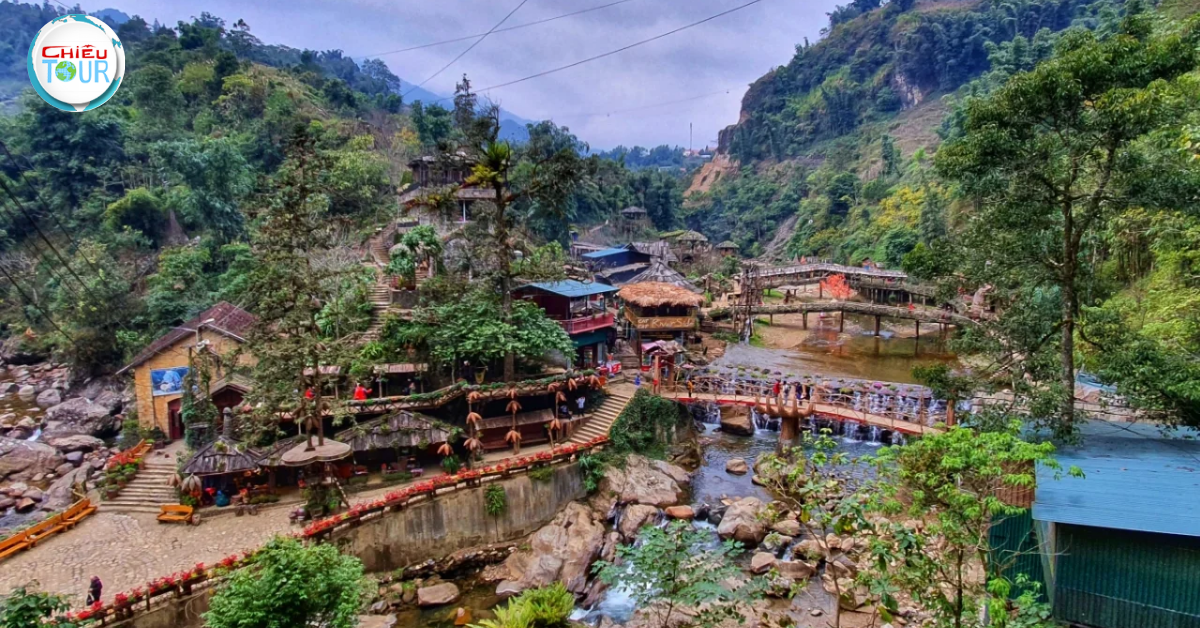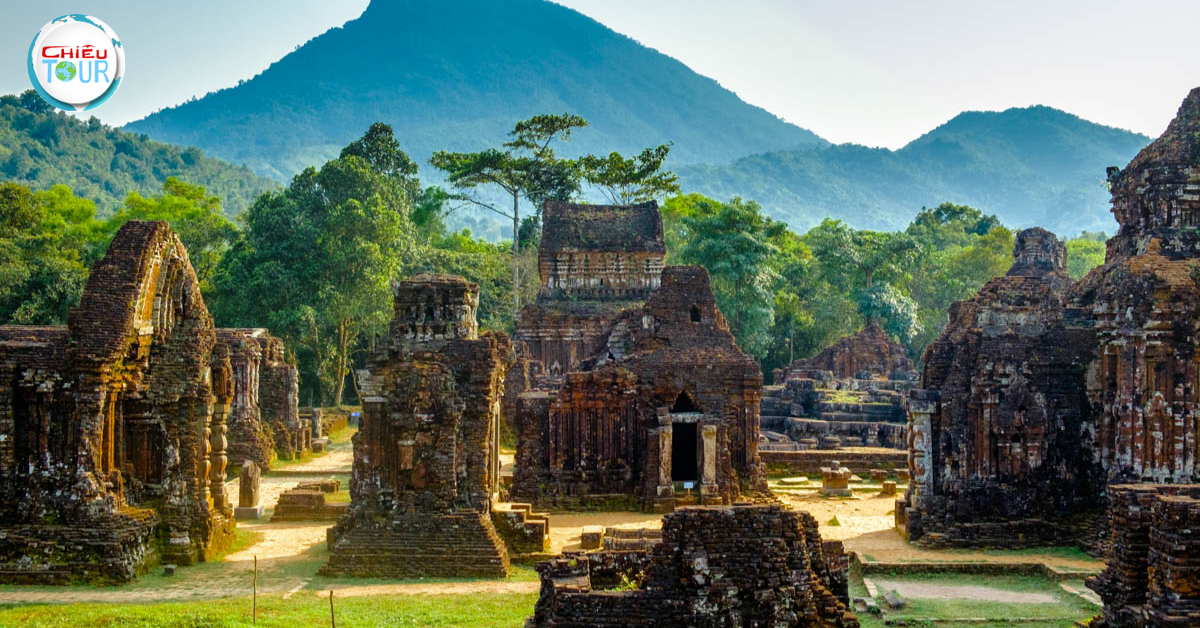Cát Cát Village Sa Pa
- Author: Admin
- | Hot destination
Cát Cát Village Sa Pa
Nestled in the majestic mountains of northern Vietnam, Cát Cát Village Sa Pa presents a breathtaking landscape that transports visitors to a world brimming with natural beauty and cultural authenticity. This enchanting village, home to the Hmong ethnic minority, offers an unparalleled glimpse into the lives of its inhabitants, showcasing their rich traditions, vibrant textiles, and stunning terraced rice fields. Not only is it a treasure trove of stunning vistas and cultural experiences, but it also serves as a reminder of the simple yet profound connection between nature and humanity.
Exploring Cát Cát Village is more than just a sightseeing excursion; it's an opportunity to immerse oneself in local culture, engage with community members, and savor the authentic flavors of the region. As we delve deeper into this remarkable destination, we will uncover the myriad wonders that make Cát Cát Village Sa Pa a must-visit for travelers seeking both adventure and meaning in their journeys

Cát Cát Village Sa Pa
Cát Cát Village is often seen as the epitome of Vietnamese rural charm. As you approach the village, the gentle sound of flowing water from the nearby stream harmonizes with the rustle of leaves in the wind, creating a serene atmosphere that invites exploration. The very essence of the village lies in its picturesque landscapes characterized by lush greenery, rolling hills, and intricately designed terraced fields that cascade down the mountainsides.
The connection between Cát Cát Village and its surroundings is palpable. The villagers have lived in harmony with nature for generations, cultivating rice, corn, and various vegetables in the fertile soil. Their sustainable farming practices reflect a deep respect for the environment, which has allowed them to thrive in this mountainous terrain.
The vibrancy of Cát Cát can be seen not just in its surroundings but also in the daily activities of its residents. The Hmong people, known for their colorful traditional costumes, bring life to the village through their craftsmanship and communal practices. From weaving intricate textiles to preparing local dishes, every aspect of life in Cát Cát tells a story worth exploring.
The distinct cultural identity of Cát Cát is intertwined with its historical significance. This village has become a focal point for cultural preservation and tourism development, attracting visitors who seek to learn about the unique customs and traditions of the Hmong people. The harmonious blend of tradition and modernity makes Cát Cát Village an exciting destination that provides insights into the evolving narrative of Vietnam's diverse socio-cultural fabric.

The History of Cát Cát Village
Understanding the history of Cát Cát Village enriches the experience of visiting this captivating place. The origins of the village date back to the 19th century when the Hmong people migrated from southern China to northern Vietnam. They chose this mountainous region due to its favorable climate and fertile land, which were ideal for agriculture.
As the Hmong people settled in Cát Cát, they established a lifestyle that revolved around agriculture and community. Over the years, they built wooden houses on stilts, which are distinctive to their architectural style, and developed sophisticated farming techniques to cultivate rice and other crops. The terraced fields that characterize the landscape today are a testament to their ingenuity and adaptability, allowing the Hmong to maximize arable land despite the mountainous terrain.
Despite modernization over the decades, the villagers have retained many of their traditional customs and beliefs, forming a rich tapestry of cultural heritage that continues to thrive. Festivals, rituals, and social gatherings play a significant role in preserving their identity, and these events are often a highlight for visitors to Cát Cát Village.
Moreover, the impact of tourism on Cát Cát's history cannot be overlooked. In recent years, the village has opened its doors to travelers eager to learn about Hmong culture. While tourism has provided economic opportunities, it has also prompted discussions about cultural preservation and environmental sustainability.

Cultural Significance of Cát Cát Village
One of the most striking aspects of Cát Cát Village is its cultural significance. The Hmong people are known for their vibrant culture, which is reflected in their clothing, crafts, and traditions. The intricate designs and vivid colors of their traditional costumes are not mere embellishments; they carry deep symbolism and meanings that link the wearers to their ancestry and community ties.
Visitors to Cát Cát can witness traditional textile weaving firsthand, as many women work diligently at their looms to create beautiful fabrics. The patterns often depict elements of nature, folklore, and daily life, each piece telling a unique story. Engaging with artisans in this way allows travelers to gain insight into the time-honored skills and dedication required to maintain these traditions.
Additionally, the village hosts various festivals throughout the year, celebrating important agricultural cycles, spiritual beliefs, and community milestones. These celebrations are marked by lively music, traditional dances, and offerings made to ancestral spirits. Participating in such events provides an opportunity for travelers to connect with local customs on a profound level, fostering mutual understanding and respect.
Furthermore, the oral storytelling tradition holds great importance in Cát Cát, serving as a means of passing down knowledge, history, and values from one generation to another. Stories of mythical creatures, heroic ancestors, and moral lessons resonate deeply within the community, reinforcing their cultural identity and sense of belonging.
The Natural Beauty of Cát Cát Village
The allure of Cát Cát Village extends beyond its cultural richness; it is also a paradise for nature lovers. Surrounded by towering mountains, dense forests, and cascading streams, the village offers breathtaking panoramic views that leave visitors in awe of the raw beauty of the region.
The terraced rice fields are perhaps the most iconic feature of Cát Cát's landscape. These meticulously crafted steps of greenery paint a stunning picture, especially during the planting and harvesting seasons when the fields transform into a patchwork of vibrant colors. Hiking through these fields is not just a physical activity; it is a journey into the heart of Hmong agriculture, where the interconnectedness of land and livelihood comes to life.
The natural environment surrounding Cát Cát is teeming with biodiversity. Birdwatchers and wildlife enthusiasts can delight in the variety of avian species that inhabit the area, while the lush vegetation provides a habitat for numerous flora and fauna. Some hiking trails lead to higher elevations, offering opportunities to observe the changing ecosystems and experience the tranquility of nature away from the hustle and bustle of urban life.
Moreover, the sound of rushing water from the waterfalls and streams creates a soothing backdrop that enhances the overall experience. The refreshing mist from the falls invigorates the senses, inviting visitors to pause and reflect amidst the beauty of their surroundings.
For those seeking adventure, Cát Cát also offers numerous trekking options, ranging from casual walks to more challenging hikes. Each trail leads to hidden gems, whether it’s a viewpoint overlooking the valley or a secluded spot perfect for picnicking. The physical act of hiking becomes a pathway to mindfulness, allowing visitors to fully engage with the sights, sounds, and sensations of this idyllic landscape.

Conclusion
In conclusion, Cát Cát Village Sa Pa stands as a testament to the vibrant cultural heritage and natural beauty found in Vietnam's mountainous regions. It beckons travelers with its rich history, captivating traditions, and stunning landscapes. Visiting Cát Cát transcends mere tourism; it is an invitation to connect deeply with a community that embodies resilience, creativity, and a profound relationship with the land.
Whether you find yourself marveling at the intricacies of Hmong textiles, participating in jubilant festivals, or exploring the breathtaking terraced landscapes, every moment spent in Cát Cát Village leaves a lasting impression. The warmth of the local people and the authenticity of their way of life offer a rare glimpse into a world still anchored in tradition and the rhythms of nature.
As we navigate an increasingly globalized world, places like Cát Cát Village remind us of the importance of cultural preservation and the value of sustainable living. By engaging respectfully with communities and supporting their livelihoods through responsible tourism, we can contribute to the safeguarding of these precious cultures for future generations.
So pack your bags, lace up your hiking boots, and head to Cát Cát Village Sa Pa—a destination where adventure awaits, cultural richness thrives, and the spirit of community flourishes amidst the beauty of nature.
 Vietnam
Vietnam 





